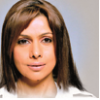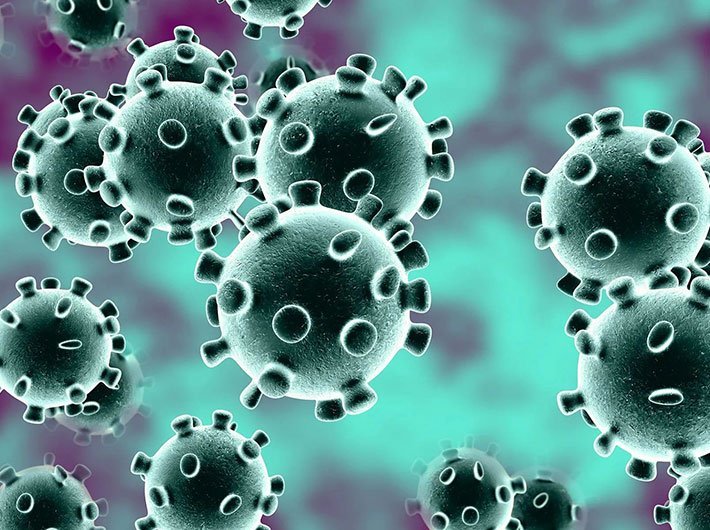Mumbai on Friday reported 20,971 new Covid positive cases and 6 Covid deaths. Among new cases, 84% (17,616) are asymptomatic patients. 1,395 patients were hospitalized today, and 88 of them were put on oxygen. Out of the total 35,645 beds, 6,531 (18.3%) are occupied.
Between December 31 and January 6, the overall growth rate of Covid cases in Mumbai is 1.2% and the recovery rate is 87%. The doubling rate is 56 days.
The government today made it compulsory for all international arrivals at airports starting January 11 to fill Mandatory Self-Declaration Form (SDF) and upload negative RT-PCR test report.
Airlines are required to ensure availability of negative RT-PCR report before allowing the travellers to board.
Travelers coming from Countries ‘at risk’- South Africa, Brazil, Botswana, China, Ghana, Mauritius, New Zealand, Zimbabwe, Tanzania, Hong Kong, Israel, Congo Ethiopia, Kazakhstan, Kenya, Nigeria, Tunisia, Zambia, UK and countries in Europe are to undergo RT-PCR testing on arrival.
If tested negative, they will have to Home quarantine for 7 days and re-test on the 8th day. The result upload report on Air Suvidha Portal and if negative they will self-health monitor for next 7 days. If tested positive on repeat testing, send sample for genomic testing and admit at isolation facility. Treatment to be given as per laid down standard protocol and discharge to be at advice of treating physician.
If testing positive, sample to be sent for genomic testing. Admit at isolation facility. Treatment to be given as per laid down standard protocol. Discharge to be at the advice of treating physician.
For travelers coming from countries excluding those enlisted as at risk, a random sample of 2% of travelers to undergo RT-PCR testing on arrival.
If tested negative - All travellers (including 2 % tested at random) to home quarantine for 7 days followed by test on the 8th day. Upload report on Air Suvidha Portal and if negative, self-health monitoring for next 7 days.
If tested positive on repeat testing sample to be sent for genomic testing, treatment as per laid down standard protocol.
Children under 5 years of age are exempted from pre- and post- arrival testing. However, if found symptomatic for Covid-19 on arrival or during home quarantine period they shall undergo testing and treated as per laid down protocol.
All international arrivals , if they develop symptoms during quarantine/ self-health monitoring period or test positive on repeat testing, will report to nearest health facility or contact National (1075) or State Helpline number.
Following the MoHFW guidelines on home isolation of mild/asymptomatic covid -19 cases on January 5, BMC issued revised guidelines for home isolation of clinically assessed and assigned Covid-19 patients and their care givers.
Asymptomatic cases are laboratory confirmed cases who are not experiencing any symptoms and have oxygen saturation at room air of more than 93% and clinically assigned mild cases are patients with upper respiratory tract symptoms with or without fever without shortness of breath and having oxygen saturation at room air of more than 93%.
Patients eligible for Home Isolation
1. The patient should be clinically assigned as mild/ asymptomatic case by the treating Medical Officer
2. Such cases should have the requisite facility at their residence for self-isolation and for quarantining the family contacts. All the patients not having such facility will be shifted to designated CCC2
3. A caregiver (ideally someone who has completed his COVID-19 vaccination schedule) should be available to provide care on 24x7 basis. A communication link between the caregiver and a Medical Officer of BMC is expected for the entire duration of home isolation.
4. Elderly patients aged more than 60 years and those with co-morbid conditions such as Hypertension, Diabetes, Heart disease, Chronic lung liver kidney disease, Cerebrovascular disease etc. shall only be allowed home isolation after proper evaluation by the treating Medical Officer / Doctor.
5. Patients suffering from immune compromised status (HIV, Transplant recipients, Cancer therapy, etc.) are not recommended for home isolation and shall only be allowed home isolation after proper evaluation by the treating Medical Officer/Doctor
6. While a patient is allowed home isolation, all other members in the family including other contacts shall follow the home quarantine guidelines
7. Home Isolation shall not be applicable for pregnant women 2 weeks before Expected Date of Delivery (EDD)
Instructions for the patient
1. Patient must isolate himself from other household members, stay in the identified room and away from other people in home, especially elderly and those with co-morbid conditions like hypertension, cardiovascular disease, renal disease etc.
2. The patient should stay in a well-ventilated room with cross ventilation and windows should be kept open to allow fresh air to come in.
3. Patient should at all times use triple layer medical mask. They should discard mask after 8 hours of use or earlier if the mask becomes wet or is visibly soiled. In the event of Caregiver entering the room, both Caregiver and patient may preferably consider using N 95 mask.
4. Mask should be discarded after cutting them to pieces and putting in a paper bag for a minimum of 72 hours.
5. Patient must take rest and drink lot of fluids to maintain adequate hydration.
6. Follow respiratory etiquettes at all times.
7. Undertake frequent hand washing with soap and water for at least 40 seconds or clean with alcohol-based sanitizer.
8. The patients shall not share personal items including utensils with other people in the household.
9. Need to ensure cleaning of frequently touched surfaces in the room (tabletops, doorknobs handles, etc.) with soap/detergent & water. The cleaning can be undertaken either by th patient or the caregiver duly following required precautions such as use of masks and gloves
10. Self-monitoing of blood oxygen saturation with a pulse oximeter for the patient is advised.
11. The patient shall self-monitor his/her health with daily temperature monitoring (as given below) and report promptly if any deterioration of symptom is noticed. The status shall be shared with the treating Medical Officer as well as surveillance teams/Control room.
Patients Self-Health Monitoring Chart to have- Date and Time, Temperature, Heart rate from Pulse Oximeter, SpO2 % from a Pulse Oximeter, Feeling (better / same (better/ same worse)and Breathing (from pulse Oximeter Time / worse) parameters.
For self-monitoring blood oxygen saturation with a pulse oximeter, place the index finger (after cleaning hands and removing nail polish, if any) in the pulse oximeter probe and take the highest steady reading after a few seconds.
The patient may self-monitor breathing rate/respiratory rate in sitting position, breathe normally and count the number of breaths taken in 1 full minute.
Instructions for Care Giver
Mask
1. The caregiver should wear a triple layer medical mask. N95 mask may be considered when in the same room with the ill person.
2. Front portion of the mask should not be touched or handled during use.
3. If the mask gets wet or dirty with secretions, it must be changed immediately
4. Mask should be discarded after cutting them to pieces and putting in a paper bag for a minimum of 72 hours.
5. Perform hand hygiene after disposal of the mask.
6. He/she should avoid touching own face, nose or mouth.
Hand hygiene
1. Hand hygiene must be ensured following contact with ill person or his immediate environment.
2. Use soap and water for hand washing at least for 40 seconds. Alcohol-based hand rub can be used, if hands are not visibly soiled.
3. After using soap and water, use of disposable paper towels to dry hands is desirable. If not available, use dedicated clean cloth towels and replace them when they become wet.
4. Perform hand hygiene before and after removing gloves.
Exposure to patient/patient's environment
1. Avoid direct contact with body fluids (respiratory, oral secretions including saliva) of the patient. Use disposable gloves while handling the patient.
2. Avoid exposure to potentially contaminated items in his immediate environment (e.g. avoid sharing eating utensils, dishes, drinks, used towels or bed linen)
3. Food must be provided to the patient in his room. Utensils and dishes used by the patient should be cleaned with soap/detergent and water while wearing gloves. The utensils may be re-used after proper cleaning.
4. Clean hands after taking off gloves or handling used items. Use triple layer medical mask and disposable gloves while cleaning or handling surfaces, clothing or linen used by the patient. Perform hand hygiene before and after removing gloves.
Biomedical Waste disposal
1.Effective and safe disposal of general wastes such as disposable items, used food packets, fruit peel offs, used water bottles, left-over food, disposable food plates etc. should be ensured. They should be collected in bags securely tied for handing over to waste collectors.
2. Further, the used masks, gloves and tissues or swabs contaminated with blood/ body fluids of COVID-19 patients, including used syringes, medicines, etc., should be treated as biomedical waste and disposed of accordingly by collecting the same in a yellow bag and handed over to waste collector separately so as to prevent further spread of infection within household and the community. Else they can be disposed of by putting them in appropriate deep burial pits which are deep enough to prevent access to rodents or dogs etc.
Treatment for patients with mild/ asymptomatic disease in home isolation
1. Patients must be in communication with a treating Medical Officer/ Doctor and promptly report in case of any deterioration.
2. The patient must continue the medications for other co-morbidities/ illness after consulting the treating Medical Officer/ Doctor.
3. Patients to follow symptomatic management for fever, running nose and cough, as warranted.
4. Patients may perform warm water gargles or take steam inhalation thrice a day.
5. If fever is not controlled with a maximum dose of Tab. Paracetamol 650 mg four times a day, consult the treating doctor Avoid misinformation on social media which are non-authentic or non-verified and hence
6. Avoid panic Do not rush for self-medication, blood investigation or radiological imaging like chest X ray or chest CT scan without consultation of your treating Medical Officer
7. Steroids are not indicated in mild disease and shall not be self-administered. Overuse& inappropriate use of steroids may lead to additional complications.
8. Treatment for every patient needs to be monitored individually as per the specific condition of the patient concerned and hence generic sharing of prescriptions shall be avoided.
9. In case of falling oxygen saturation or shortness of breath, the person may require hospital admission and shall seek immediate consultation of their treating Officer/surveillance team /Control room.
When to seek medical attention
1. Patient/ Care giver will keep monitoring their health. Immediate medical attention must be sought if serious signs or symptoms develop. These could include- 1.Unresolved High-grade fever (more than 100° F for more than 3 days)
2. Difficulty in breathing.
3. Dip in oxygen saturation (SpO2 less than 93% on room air at least 3 readings within 1 hour) or respiratory rate >24/ min.
4. Persistent pain/pressure in the chest.
5. Mental confusion or inability to arouse.
6. Severe fatigue and myalgia.
When to end Home Isolation
Patient under Home Isolation will stand discharged and end isolation after at least 7 days have passed from testing positive and no fever for 3 successive days and they shall continue wearing masks. There is no need for re-testing after the home isolation period is over.
High risk contacts shall be home quarantined for 7 days. They shall be tested on 5"to 7"day or immediately if they turn symptomatic and further protocols shall be followed based on their test results. If negative end home quarantine.
Asymptomatic low risk contacts of infected individuals need not undergo COVID test.
India recorded 1,17,100 new Covid -19 in the last 24 hours. Daily positivity rate is 7.74% and the weekly Positivity Rate is 4.54%.

